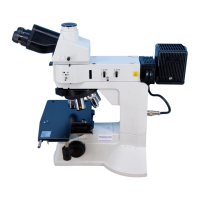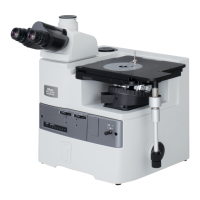15
II. Microscopy
18
Rotate the nosepiece to locate the desired
magnification objective into the optical
path. Then, perform the microscopy.
• Each time you change objectives, the field
diaphragm and the condenser aperture
diaphragm must be adjusted.
- The field aperture should be adjusted so that
its image circumscribes the view field.
- And the aperture diaphragm should be 70% to
80% of the numerical aperture of the
objective.
See Pages 31 and 32.
• Focus on the specimen again using the fine focus
knob or the coarse focus knob.
See Page 25.
• The top lens of the swing-out condenser must be
operated depending on the magnification of the
objective to be used.
See Page 29.
• To use an oil immersion type objective or a
water immersion type objective, perform the oil
immersion or water immersion.
See Pages 34 and 35.
19
When the microscopy ends, turn off the power switch.
N
D
8
NC
B
F.S
.
0
.4
0
.
2
0
.
8
0.
6
J
A
P
A
N
A
chr
0
.
9
0
0
BI
NO
PHOTO
PH
OTO
BI
NO
&
18
Switch to any
desired objective.
18
Adjust the
condenser
aperture
diaphragm.
18
Adjust the field
diaphragm.
18
Readjust
the focus.

